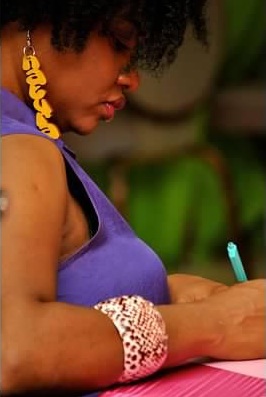
The ponytail hairstyle has been popular for many, many years. A ponytail is a hairstyle in which some or all of the hair is pulled back away from the face, gathered and secured with a hair tie or similar hair tool.
It dates back to as early as the 1950s and has today become very popular among
women. For some, the ponytail is worn as a fashion statement and it in
fact has become somewhat of a fashion trend on the runway. For others,
however, the hairstyle is well-loved because it is quick, easy and
requires very little maintenance. For many women who lead a very busy life,
this is a trusted go-to hairstyle that can be worn from day to day.
We can all concur that ponytails are cute and convenient to wear, but precautions should be taken when deciding how often and the way in which they are worn. The following factors should be considered before installing your next ponytail:
1. Wearing Tight Ponytails May Cause Traction Alopecia
 Depending on the desired look that
you are going for, you may be required to brush your hair into a smooth,
flawless, well secured ponytail. In this case the hair is tightly fastened,
which can be potentially damaging to your hair.
Depending on the desired look that
you are going for, you may be required to brush your hair into a smooth,
flawless, well secured ponytail. In this case the hair is tightly fastened,
which can be potentially damaging to your hair.
Wearing tight ponytails can put strain on the hair, particularly the hairline. The excessive pulling on the hairline required to make the ponytail tight, can lead to a condition called Traction Alopecia. Traction Alopecia is gradual hair loss caused by damage to the hair follicles resulting primarily from tension ora pulling force being applied to the hair. It commonly affects the hairline, where the hair is usually the weakest. Traction Alopecia is one of the leading causes of hair loss among African American women. Although ponytails are one of the leading causes of this disorder, other commonly worn hairstyles such as dreadlocks, braids and weaves can cause similar damage.
Traction Alopecia is reversible if detected early; however, if hair breakage or hair loss is ignored, it can lead to permanent hair loss. The key to avoiding this where ponytails are concerned is to switch from very tightly secured ones, to looser ones that are gentler on the scalp.
2. Use Appropriate Hair Securing Device

When securing a ponytail, care should be taken when deciding what fastener should be used. It is advised to use hair fasteners without metals as they can pull on and potentially pull out your hair strands when they are being installed or removed from your hair. There are elastic fasteners with special coverings that are designed to prevent the hair from pulling or popping. Cloth covered scrunchies are ideal for securing ponytails as long as the fabric is not too coarse or rough for the hair. This can cause friction and possibly breakage. Silk or satin is an appropriate alternative. Rubber bands should never be used as they have a tendency to snag the hair, placing it at risk for being pulled out.
Hair fasteners are the means by which most ponytails are secured but always
consider the potential dangers that using the wrong type may present.
3. Remove Ponytail Before Going To Bed
Sleep, especially at nights, usually lasts up to 8 hours. If a ponytail is not removed before going to sleep, it could mean that excessive strain and stress will be placed on your scalp. There is also potential damage that can arise if parts of the ponytail get entangled with the fastener used to secure your hair. This can lead to tangles and breakage.
4. Take Breaks Between Wearing Ponytails

Wearing your hair in a ponytail everyday is a definite no no and can in fact be a recipe for disaster. Wearing daily ponytails mean there is constant pressure placed on the hairline. This can certainly contribute to a receding hairline, especially if pulled tightly. Wearing ponytails frequently can also place you at risk for traction alopecia. As mentioned earlier, this condition can be reversed if caught early, however wearing ponytails very frequently may cause irreversible damage.
Try switching up your hairstyle to include styles that allow your hair just to
hang instead of being pinned up or pinned back.
There is absolutely no harm in wearing ponytails occasionally if they are worn correctly. We all want to look chic and fabulous but consideration should be taken to ensure that we are not trading our hair's health for its beauty.

Candie's Natural Hairnamix was birthed a few months after Jamaican native Rossette "Candie" Allen began her natural hair journey in May 2010. She gears this column toward naturals, transitioning naturals, aspiring naturals and the naturally curious, sharing experiences, expertise and experiments while celebrating emancipation from chemical slavery.

